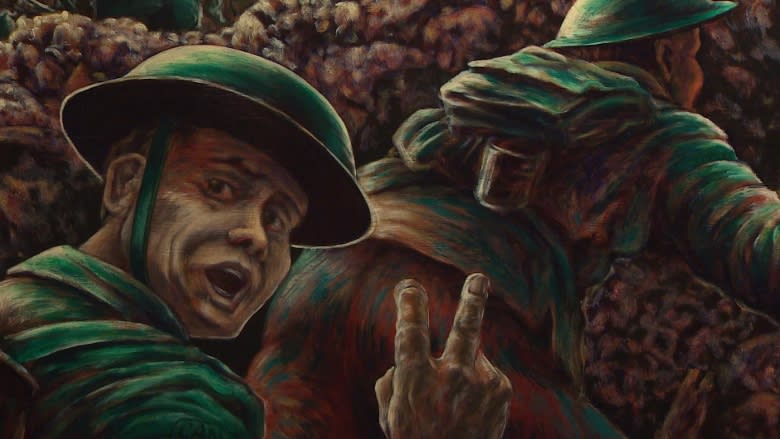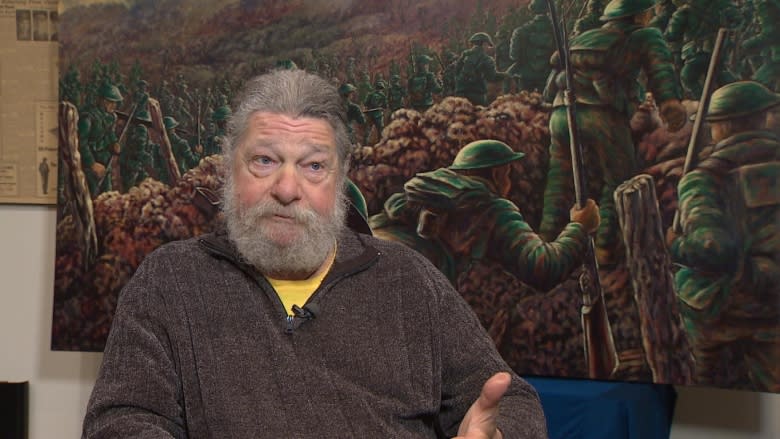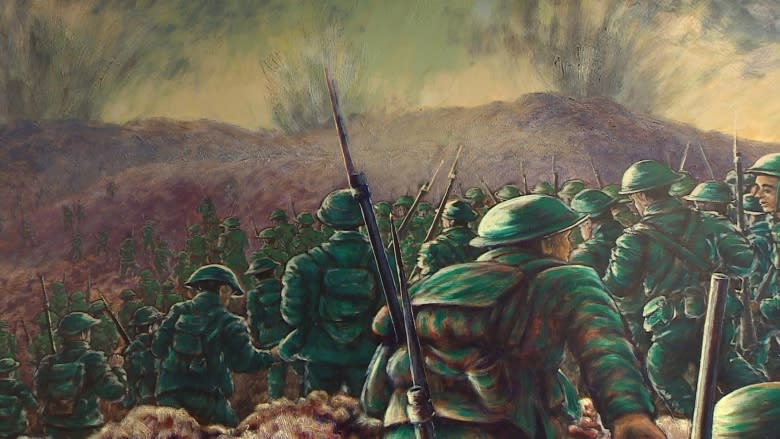Here's your first look at Vimy Ridge anniversary painting in Sussex
Sussex artist Fred Harrison, better known for his sunny outdoor murals that decorate the dairy town, is preparing to unveil a darker scene depicting Vimy Ridge on the 100th anniversary of that storied battle.
"I wanted the figures to start dissolving into the hill because that ground was made up of dead humans," said Harrison, standing next to his painting, commissioned by the 8th Hussars Museum for a public presentation at the Sussex Legion on April 9.
The image shows an untold number of Canadian soldiers after they've emerged from their trenches.
They're marching up the escarpment under some protection from heavy Canadian artillery fire exploding on the hill where the Germans had dug themselves in and held their advantage since early in the First World War.
The Canadians would capture the ridge that day, but at a cost of more than 3,500 dead.
Difficult to paint
Harrison says working on the painting was difficult and sometimes he found himself needing a break and having to walk away.
"It's not the kind of painting I would do. I'm a happy guy. I like primary colours," he said.
"So this, I found, a very hard project."
Harrison says it hurt him to think the Canadians, including his grandfather who did fight at Vimy, were mostly young adults led into war in their late teens and early 20s.
"Row upon row upon row of kids. And this, at their most gullible and altruistic, too."
Formal reveal on April 9
When the painting is formally revealed April 9, museum volunteers will talk about the historic significant of Vimy and tell the stories of eight men from Kings County who fought there.
Surviving relatives of those long-gone soldiers are also expected to attend and in some cases, travel some distance to be there.
Harrison says it's going to be a profound moment for him.
He'll also pleased to know the painting will have a permanent home among the other museum exhibits inside the town's historic train station.
"I think it is a more personal touch," said Harrison.
"It will introduce people emotionally to the evidence and artifacts around them."




